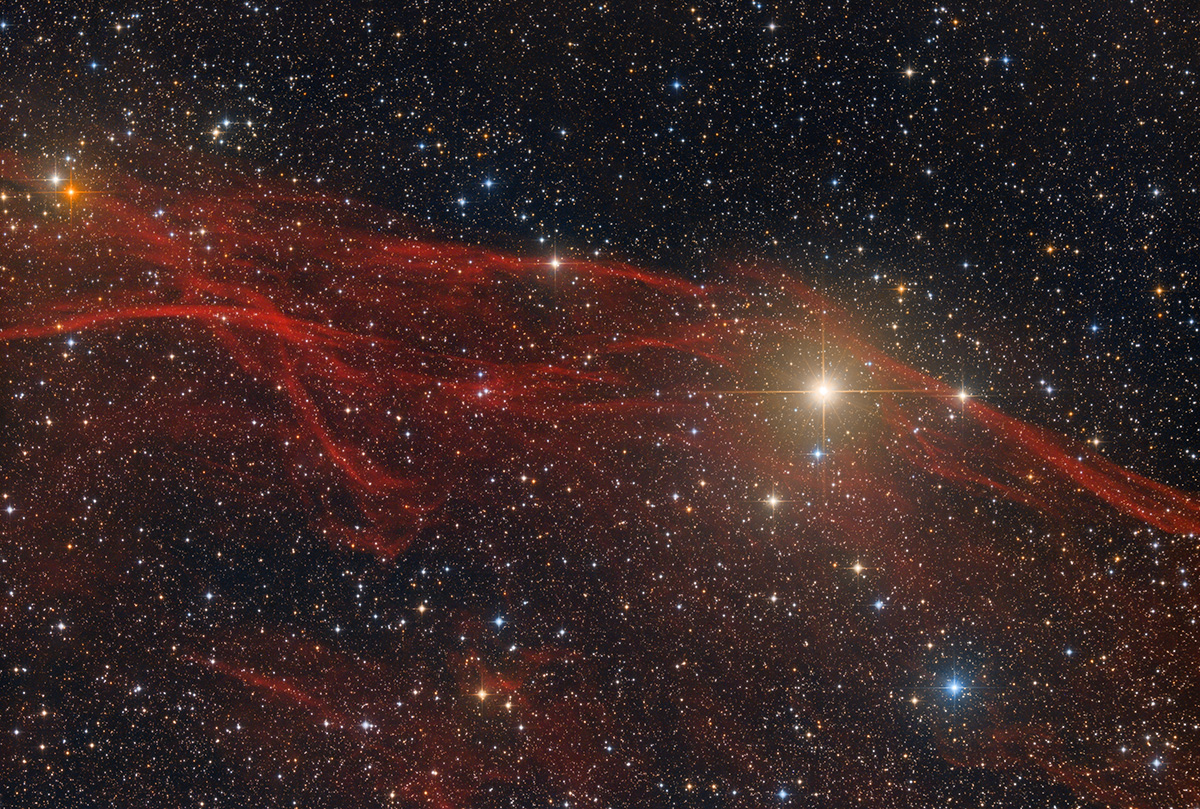
[back] LBN331 with 32 Cygni (Omicron 2 Cygni) in Cygnus [NED]
Higher resolved image / höher aufgelöstes Bild (4000 x 2695 Pixel)

|
(c) 2021 All astro photo images are copyrighted. They may not be used or reproduced without explicit written permission from the authors. |
|
300' |
|
About this Image / Über dieses Bild
| CCD: | ZWO ASI094MC Pro |
| Image Type, Orientation: | RGB-HaOIII-Composite, North is at 12:00 h |
| Exposure time: | R,G,B: 12x300 sec., Ha,OIII: 24x300 sec., all 1x1 bin (3h total) |
| Exposure date: |
August 11th 2021 |
| Location: | Capella Observatory at Eifel, Germany, remote-controlled from Bad Arolsen/Germany |
| Filter: | Internal RGB-Filter and STC Astro Duo-Narrowband Filter |
| Instrument: | Ganymed 60cm-Hypergraph in primary focus (f=1815.9 mm) |
| Photographer: | Josef Pöpsel, Frank Sackenheim, Stefan Binnewies |
| Remarks: |
LBN 331 is a Ha emission nebula around the bright double star 32 Cygni,
close to Deneb. The image is strongly reminiscent of the
Veil Nebula (NGC 6960),
but in contrast to this it is not a supernova remnant, but a pure Ha
emission nebula without traces of OIII emission. |
|
Bemerkungen: |
LBN 331 ist ein Ha-Emissionsnebel rund um den hellen
Doppelstern 32 Cygni, ganz in der Nähe von Deneb gelegen. Das Bild erinnert
stark an den Schleiernebel
(NGC 6960), ist aber im Gegensatz zu diesem kein Supernova-Überrest,
sondern ein reiner Ha-Emissionsnebel ohne Spuren von OIII- Emission. |
Back to the Diffuse Nebulae Overview / Zurück zur Diffuse-Nebel-Übersichtsseite